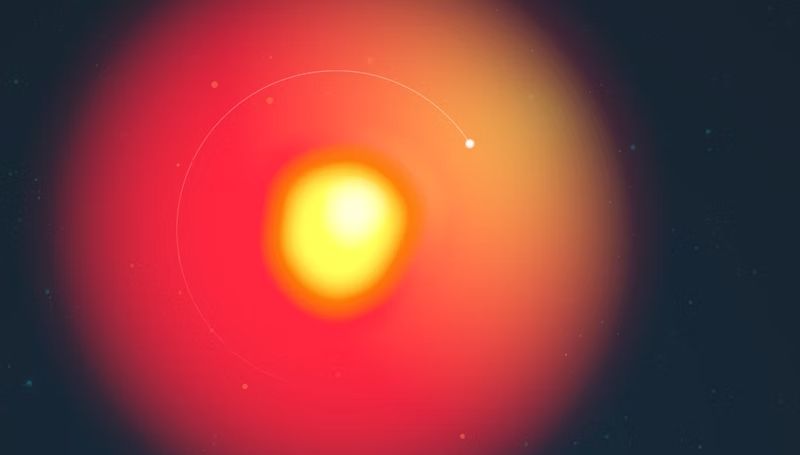Could the giant star Betelgeuse have a buddy? A Betelbuddy?
Betelgeuse, the second-brightest star in the constellation Orion, is a giant star whose strange dimming has sparked debate over when it will collapse and explode in a massive supernova. Now, however, researchers believe a companion star may be behind Betelgeuse’s irregular changes in brightness.
A new study usied computer models to simulate Betelgeuse’s activity, suggesting that the object’s periodic pulsing is likely caused by an unseen, orbiting companion star — or stellar-like object, at least. The researchers aptly nicknamed the proposed object “Betelbuddy,” or more formally, Alpha Orionis B (Betelgeuse is technically known as Alpha Orionis).
“We ruled out every intrinsic source of variability that we could think of as to why the brightening and dimming was happening in this way,” Jared Goldberg, lead author of the study and a research fellow at the Flatiron Institute’s Center for Computational Astrophysics, said in a statement.. “The only hypothesis that seemed to fit is that Betelgeuse has a companion.”
Related: The mysterious dimming of supergiant star Betelgeuse may finally be explained (photo)
Betelgeuse is a red giant star that exhibits roughly 100,000 times the brightness of our sun and more than 400 million times the volume. According to the new models, a companion star could act like a snowplow, pushing light-blocking dust out of the way as it orbits Betelgeuse and, in turn, allowing it to appear temporarily brighter from our vantage point.
This companion star model helps explain the different patterns of pulsating light observed from Betelgeuse. The star exhibits two separate periods of brightening and dimming: one that pulses on a timescale a little longer than a year, and one that pulses on a timescale of about six years. As a variable star, one of these patterns is intrinsic to Betelgeuse, caused by the star’s rhythmic expansion and contraction, and indicative of when it will become a supernova.
“If the star’s fundamental mode is its long-scale heartbeat, then Betelgeuse could be ready to blow sooner than expected,” according to the statement. “However, if its fundamental mode is its short-scale heartbeat, as several studies suggest, then its longer heartbeat is a phenomenon called a long secondary period.”
A long secondary period can be triggered by something external to the star, including a companion. In this case, the researchers argue Betelbuddy could be another star with up to twice the sun‘s mass. However, further study is required to not only confirm Betelbuddy exists, but to also better understand the true nature of a possible companion star.
“[Betelgeuse] has been the target of countless studies since the dawn of modern astrophysics,” László Molnár, co-author of the study from the Konkoly Observatory at the HUN-REN Research Center for Astronomy and Earth Sciences in Hungary, said in the statement. “And yet there’s still room to make significant new discoveries: in this case, a sunlike star hiding in plain sight, in the immense glare of a red supergiant. That is what excites me the most.”
Their findings have been accepted for publication in the The Astrophysical Journal and are currently available to view as a pre-print on the arXiv.

